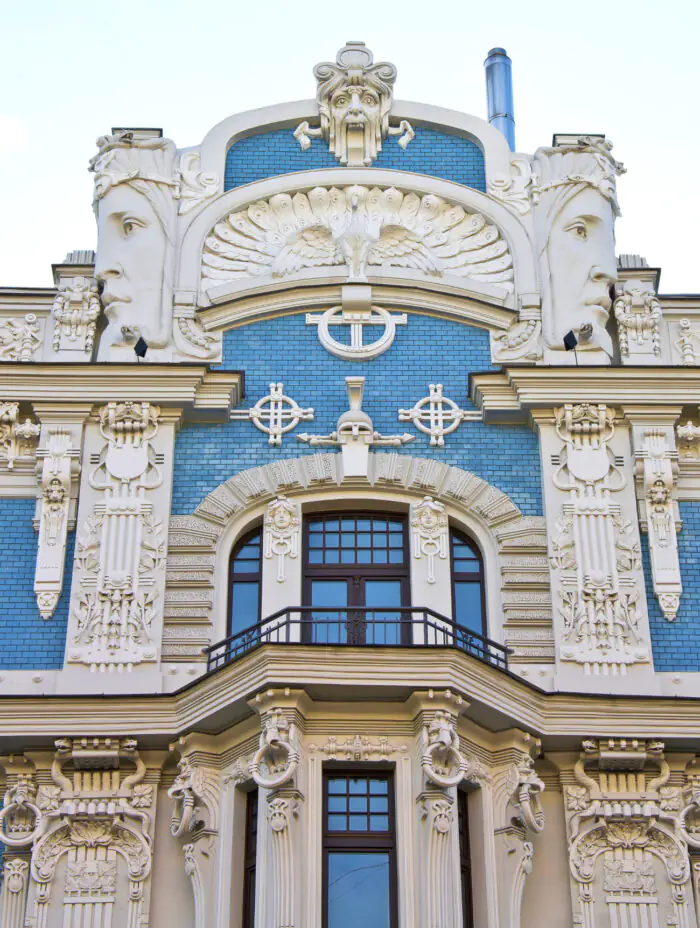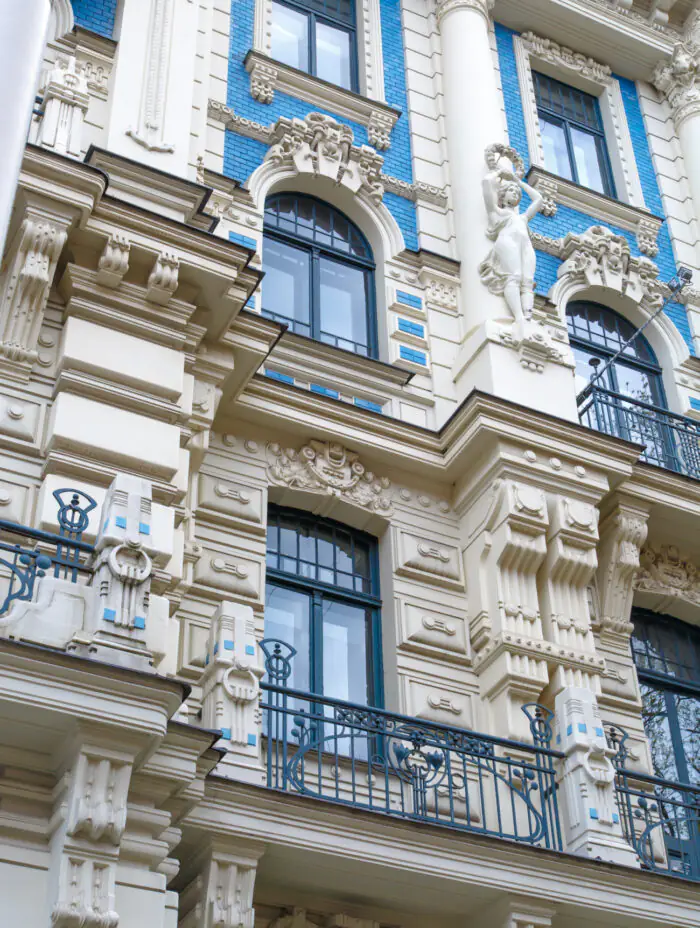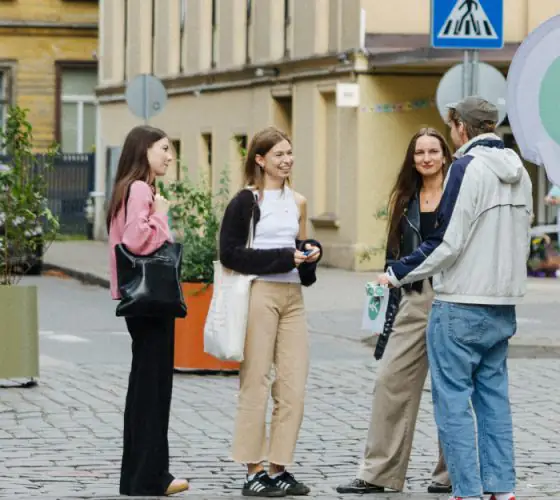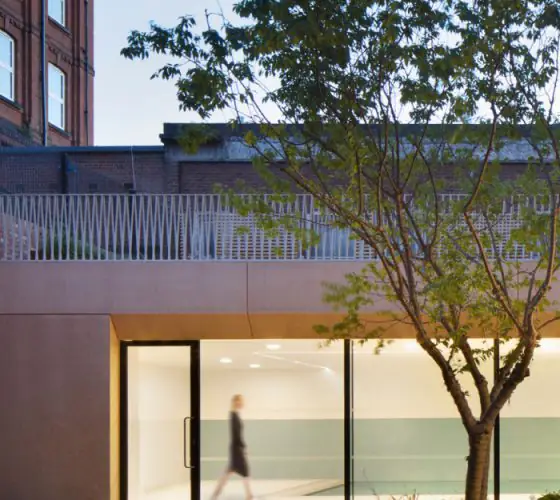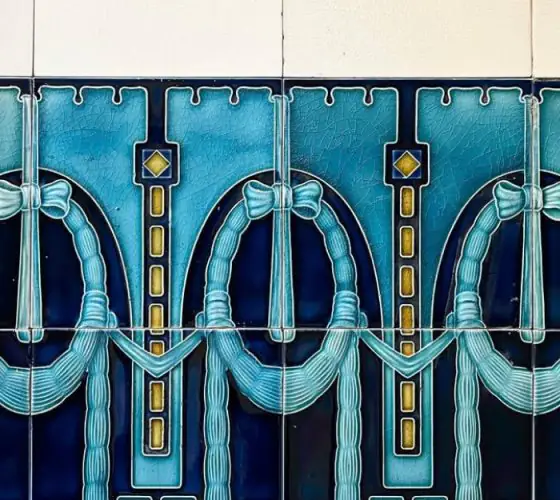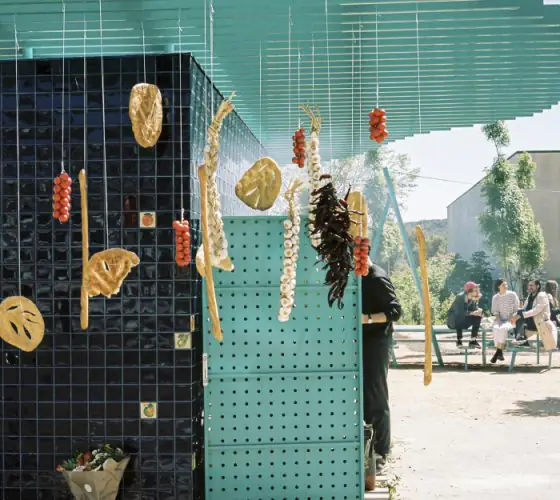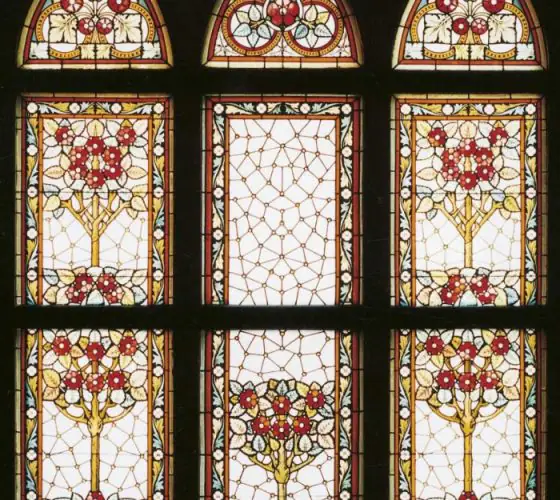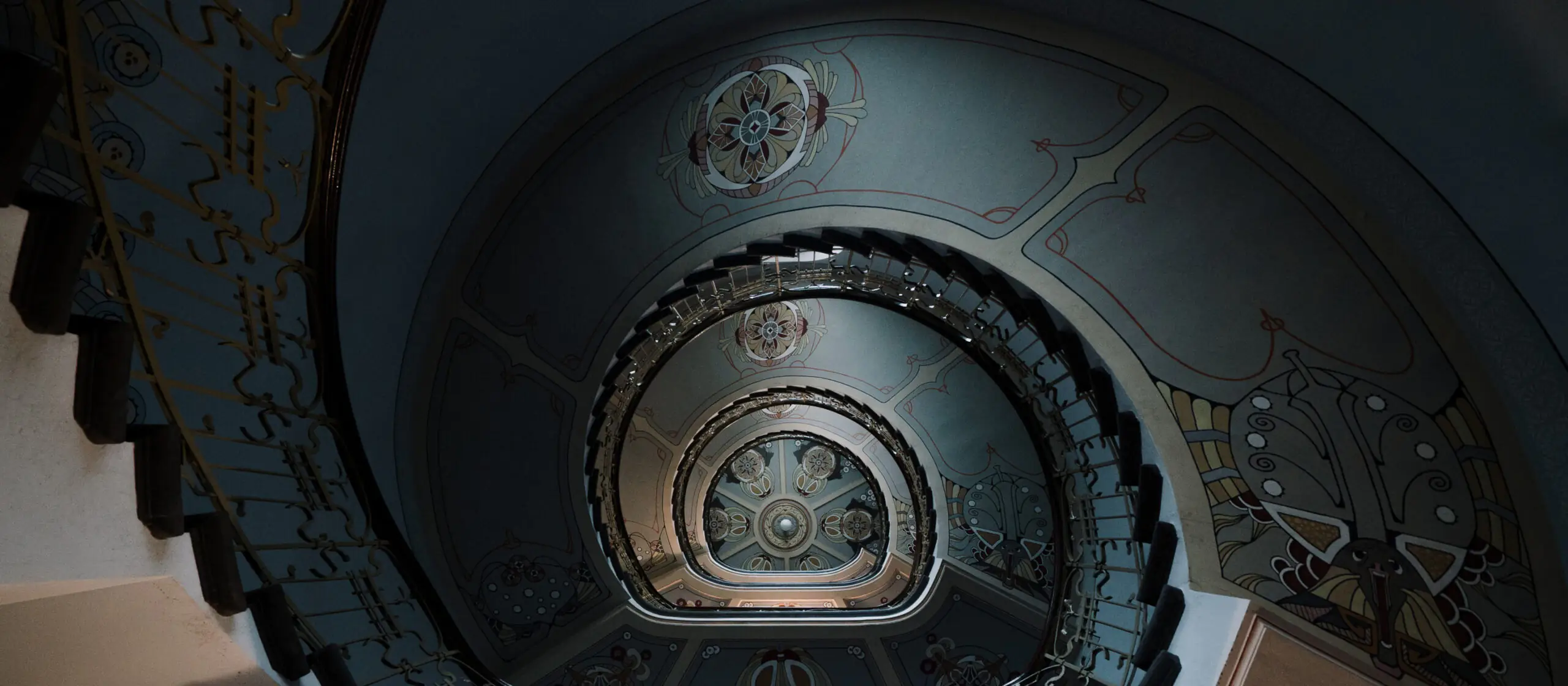
The Belle Epoque in Architecture: the Emergence of the Art Nouveau
Art Nouveau emerged and flourished in the late 19th — early 20th century in European countries, and everywhere it is called differently: Art Nouveau in France, Jugendstil in Germany, Liberti in Italy, and Modern in Russia. It is believed that the original name of Art Nouveau came from the Parisian gallery of the same name, opened by Siegfried Bing.
Artists, architects, and designers of the period had one thing in common: they were looking for a new direction, a new art, radically different from any of the classics. They wanted life and art to be woven together to make the decorations of life more functional and aesthetic.
Plant forms, colorfulness, an abundance of decor while preserving practicality marked out a new architectural trend. Art Nouveau rapidly took over European cities at the turn of the century. Riga was then one of the most important cities of the Russian Empire and actively participated in all fashion trends.
Art Nouveau and Latvia: How this Trend Became the Main Architectural Style in Riga
Art Nouveau came to Riga at the beginning of the 20th century when the city was experiencing unprecedented economic, demographic and cultural growth. Coincidentally, when this historic port city was at the peak of its popularity, the ban on buildings made of stone outside the old town was lifted. And at the same time, a new architectural movement, Art Nouveau, was actively developing in Europe.
During the years 1905–1914, between 300 and 500 buildings were built annually in Riga, mainly in the Art Nouveau style. Today in the historical part of Riga more than a third of the buildings in this style are in excellent condition.
The major emblematic points of Art Nouveau in Riga are in the historic center outside the old city. The works of Riga’s leading architects—Mikhail Eisenstein, Konstantin Pēkšēns and Eižens Laube—stand out for their colorful facades, floral and animalistic designs, asymmetric shapes, and unexpected ornaments. To find them, walk around the city and use our map.
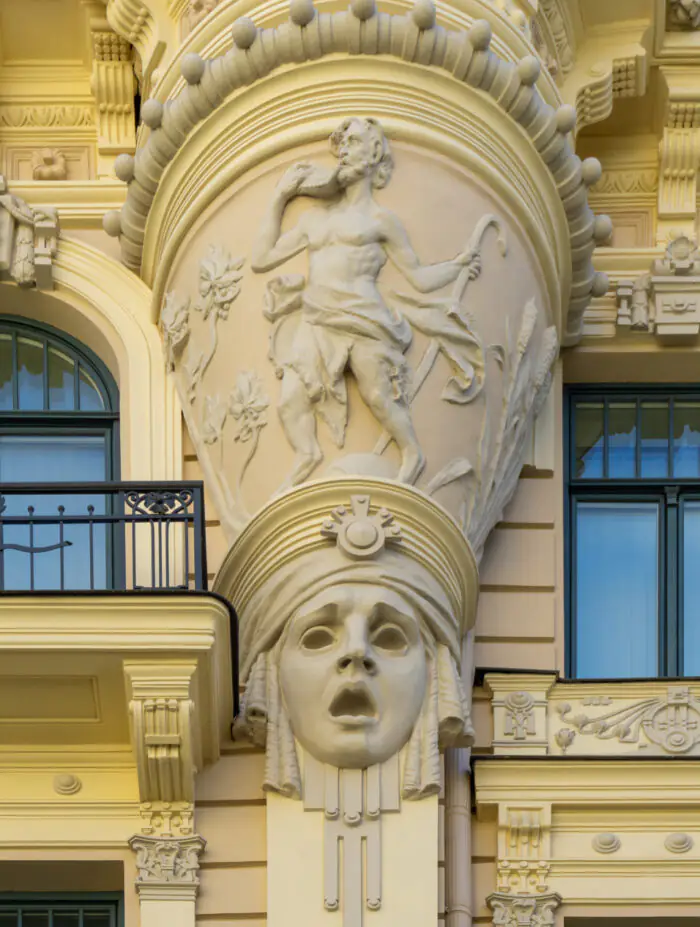
stock.adobe.com
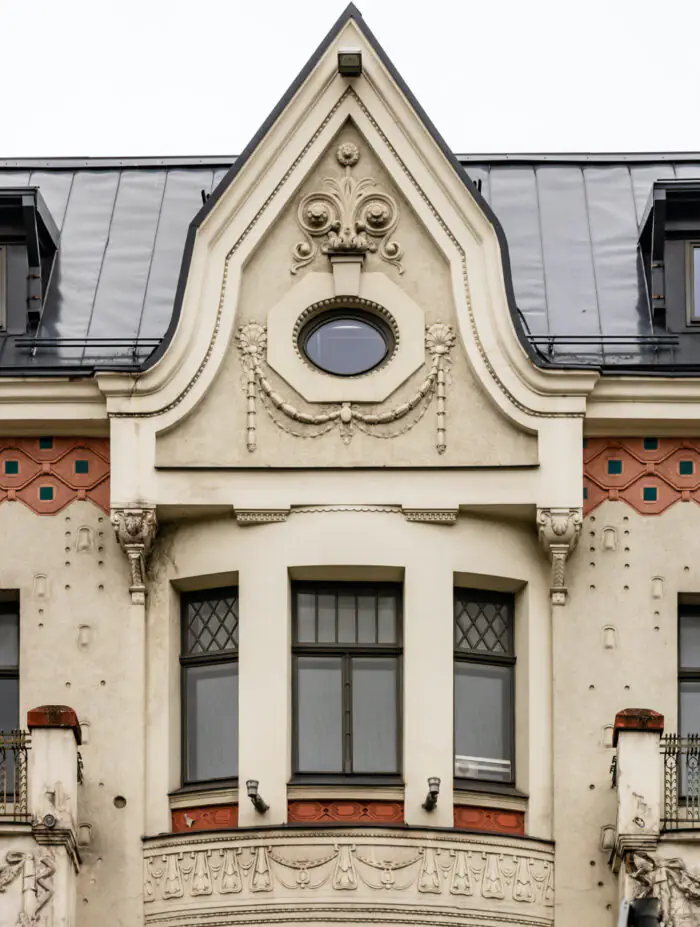
stock.adobe.com
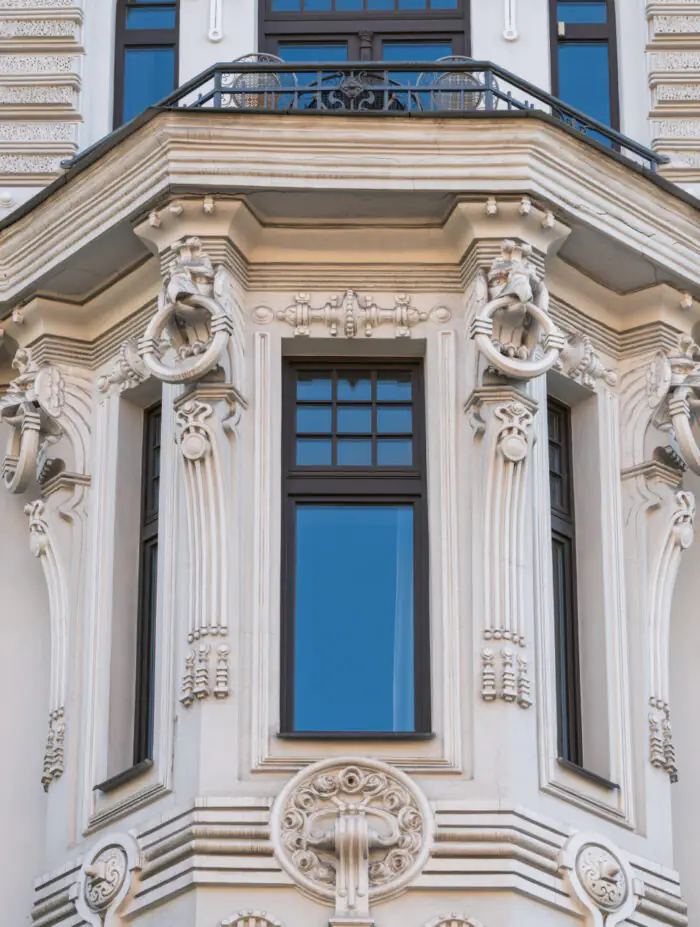
stock.adobe.com
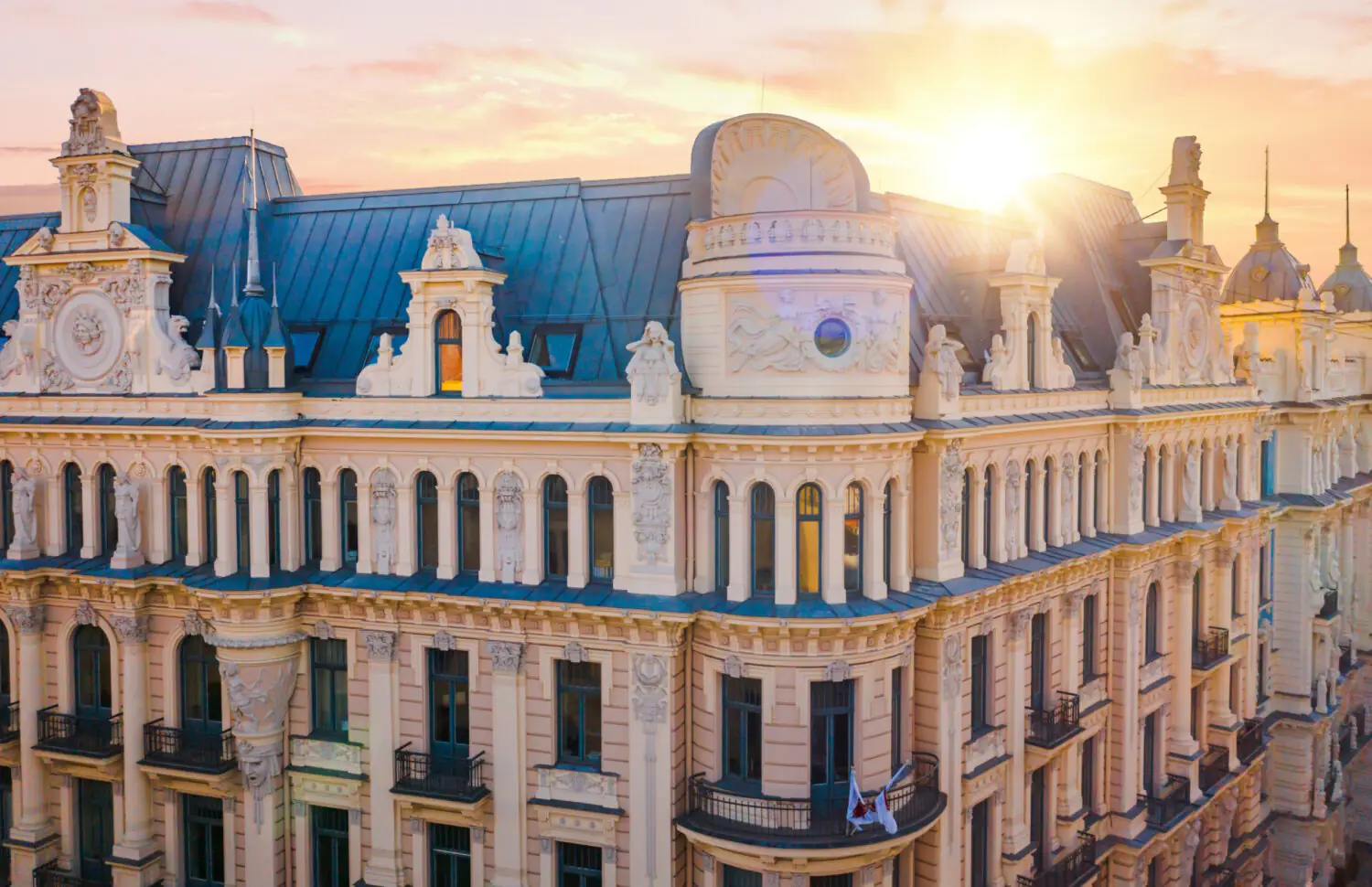
stock.adobe.com
Riga Art Nouveau Museum
Address: Alberta iela 12
Architects: Konstantin Pēkšēns, Eižens Laube
The building housing the Riga Art Nouveau Museum was designed in 1903. The asymmetrical facade of the building, the ornamentation with images of local flora and fauna, the turrets on the roof—all indicate that the building was built in the style of National Romanticism, one of the movements of Art Nouveau.

jugendstils.riga.lv
The museum was opened in an apartment of Pēkšēns, where you can trace the history of the development of the architectural movement and admire the interiors and design objects typical for those times. Note the impressive spiral staircase and the ceiling in the entryway painted by Janis Rosenthals.
Residential buildings on Elizabetes iela
Address: Elizabetes iela 10a and Elizabetes iela 10b
Architect: Mikhail Eisenstein
There are two landmark buildings of Riga on the corner of Elizabetes and Antonijas Streets, the works of one of the most outstanding architects of the Art Nouveau era. Their construction was completed in 1903, and they are symbolic of Art Nouveau in Riga.
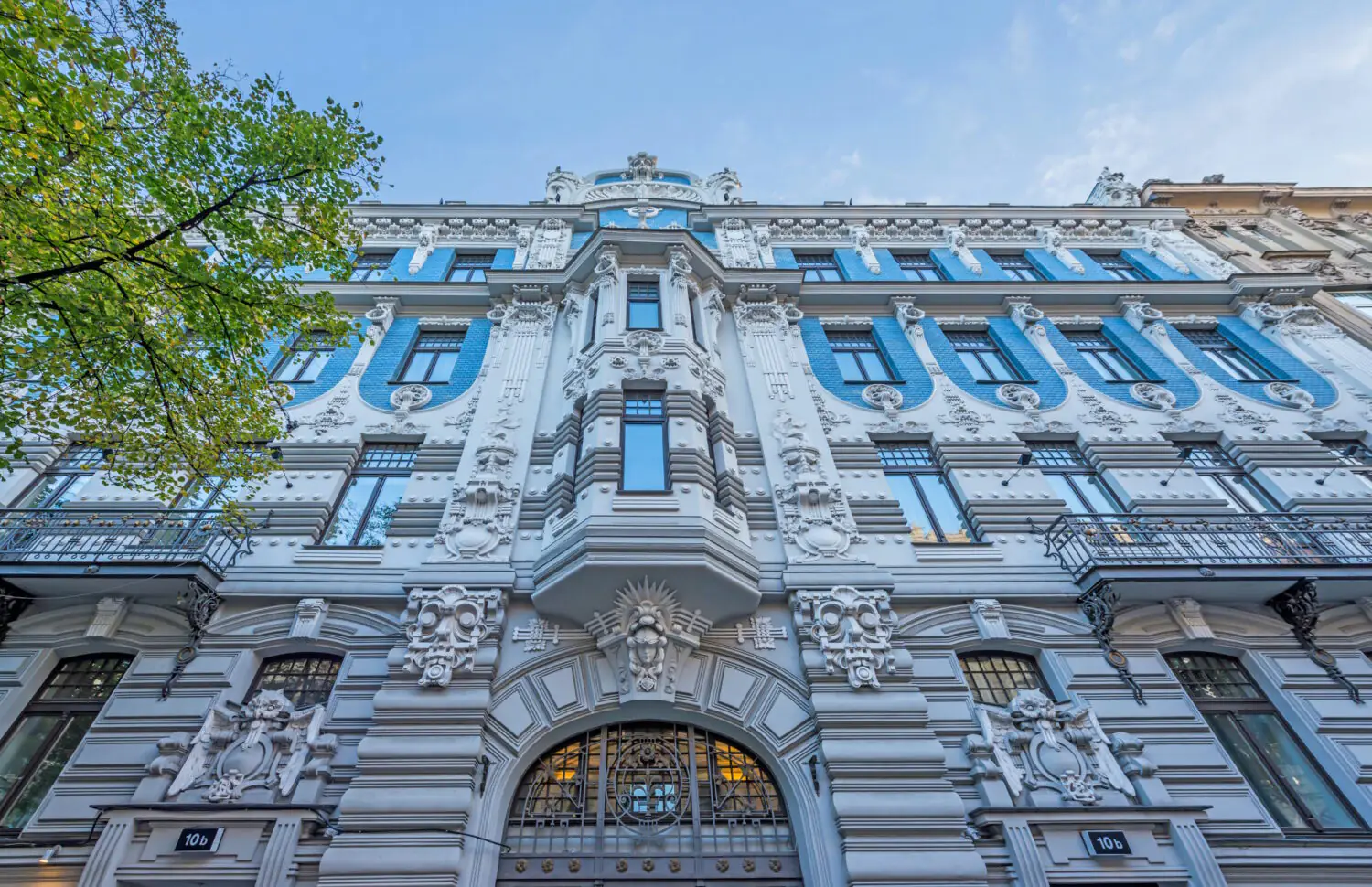
stock.adobe.com
Paradise birds, floral ornaments, an abundance of masks, monumental mascarons in one house, and the original window form of the neighboring building: everything in this ensemble wants to be seen and studied. Look at the sculptural sun face under the balcony of building 10a and try to find stylized carriage harness motifs in the façade ornamentation. This way, Mikhail Eisenstein subtly marked his job as head of public transportation at the time.
And for the decoration of the pompous building with a bright blue facade, 10b was a sketch by the Leipzig architect Georg Wünschmann and the artist Hans Kozel, published in St. Petersburg. By the way, the building opposite (Elizabetes iela 33) is also Eisenstein’s creation.
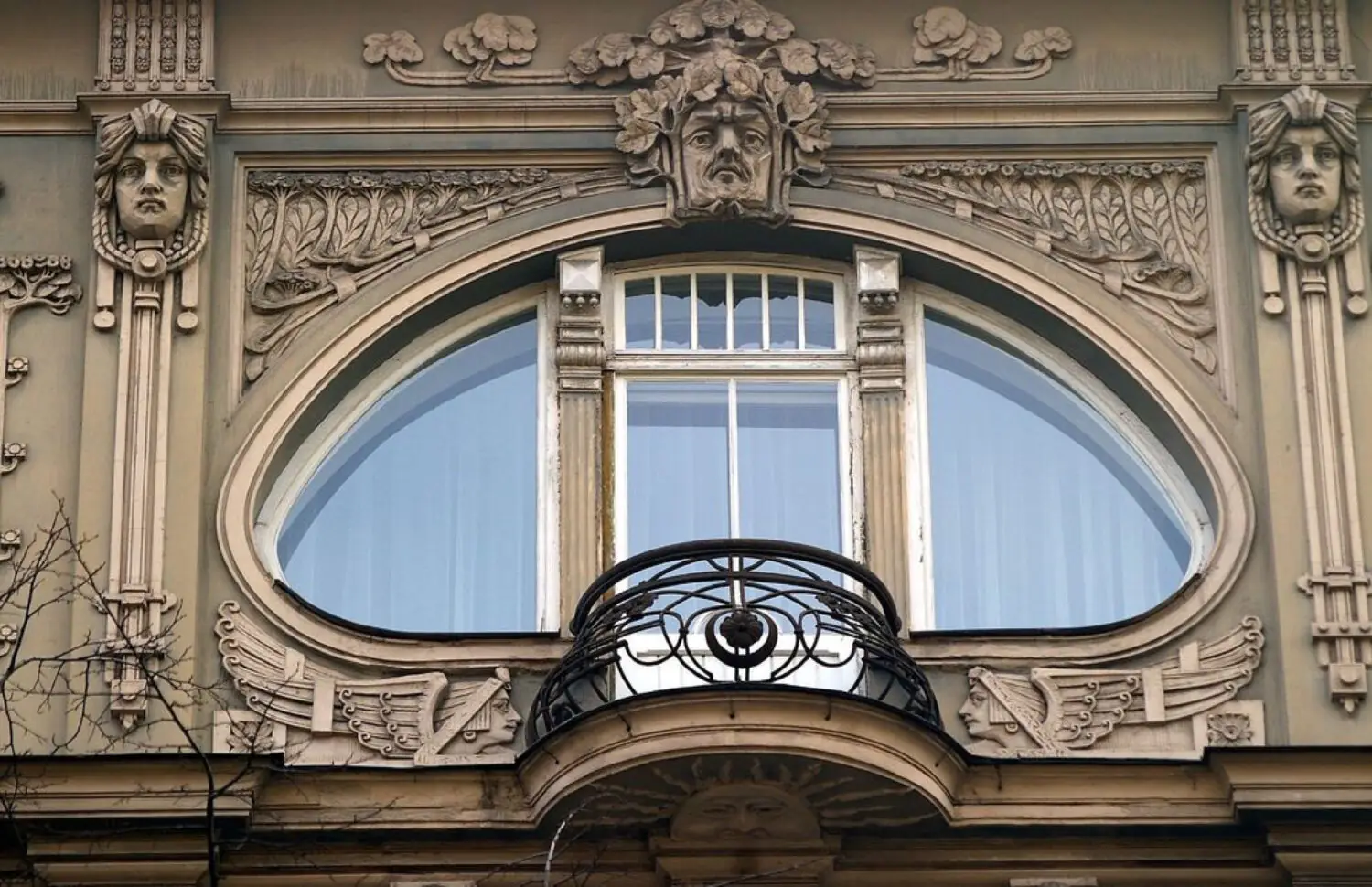
canva.com
Colorful house on the Kalēju iela
Address: Kalēju iela 23
Architect: Paul Mandelstam
One of Riga’s brightest and most colorful buildings is located in the Old town, on Kalēju Street. It appeared in 1903, and in 1983 the building was restored, thanks to which it has remained in excellent condition to this day.

restaurantguru.com
The terracotta, turquoise and yellow colors, floral ornamentation, and gilded sun on the facade of the building symbolizes the flowering of life and characterize this period of Riga’s development. The exquisite tower on the roof and the bright entrance to the building—these are the most characteristic features of the building. It now houses small stores and cafes.
Apartment house with a plant ornament
Address: Šķūņu iela 10/12
Architects: Friedrich Scheffel, Heinrich Schell
This beautiful art deco building was built in 1902 by the duo of Baltic German architects. The facade is decorated with floral ornaments, masks, and animal figures. It seems as if the building is wrapped in the thin branches of a tree. It’s an example of the ornamental-decorative art nouveau. Look at the building from Amatu Street not to miss the dog sculpture on top.
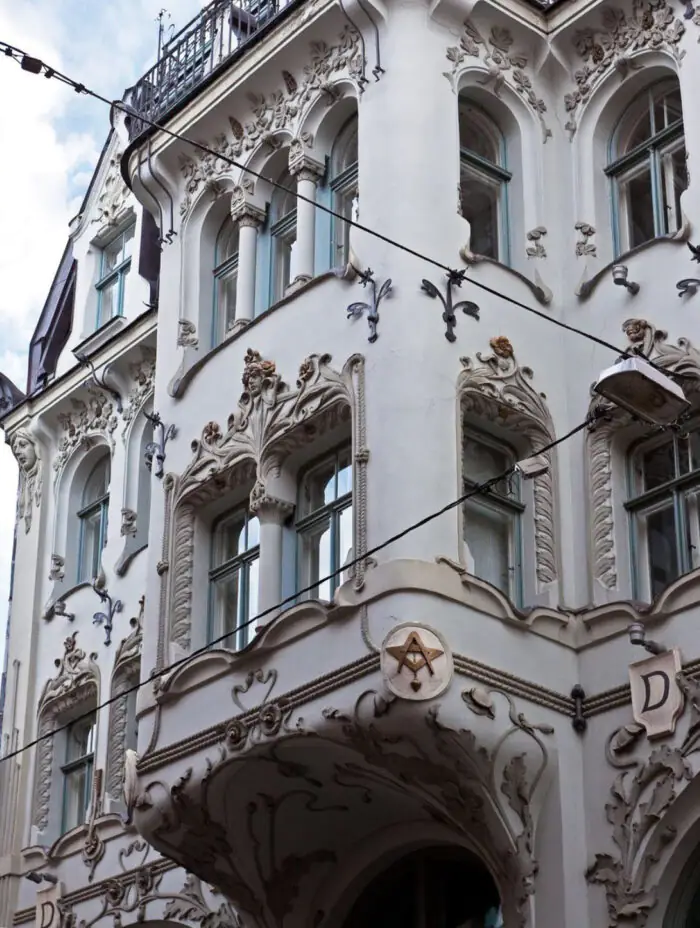
art.nouveau.world
A row of residential buildings on Alberta iela
Address: Alberta iela 8, Alberta iela 6, Alberta iela 4
Architect: Mikhail Eisenstein
It’s impossible to run along Alberta Street: so many Art Nouveau gems are concentrated here that you’ll want to stop by each building and examine it. For example, the three residences on the even side of the street are projects of Mikhail Eisenstein, and it’s easy to recognize his style and love of decor.
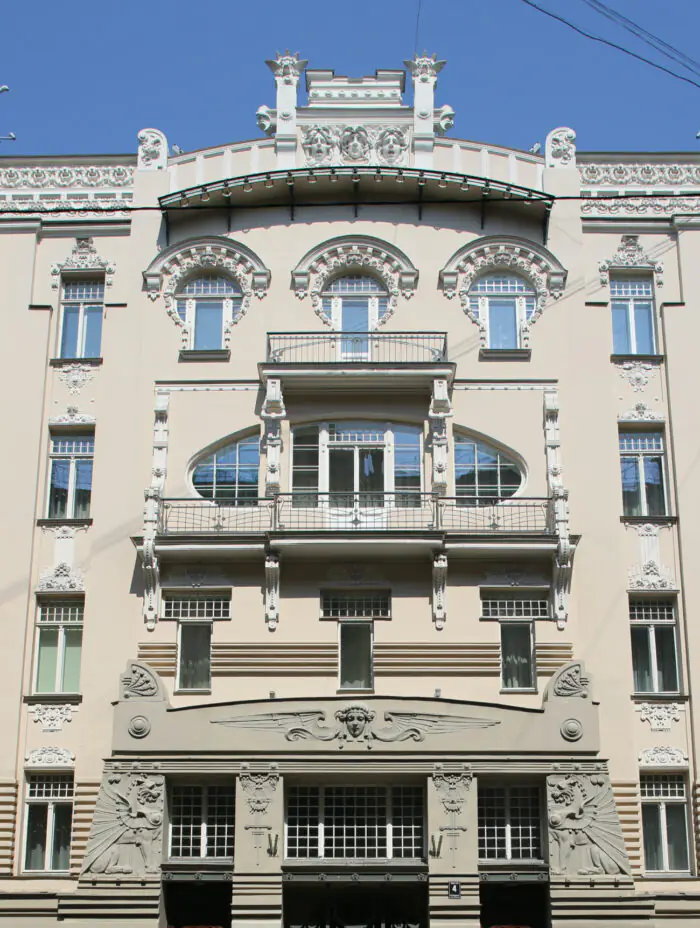
wikimedia.org
The blue house with a sky-blue facade has a central ledge resembling a tree, pilasters, and mascarons. Behind it comes a luxurious red brick building decorated with mascarons. The third house is probably the most elegant on the street, with graceful balconies and an original window in the facade’s center that immediately draws attention.
Residential building on Alberta iela
Address: Alberta iela 11
Architects: Eižens Laube
Continuing your stroll along Alberta Street, you will see an example of national romanticism in Art Nouveau. The dark building, unlike its neighbors, was built in 1908. At the same time, the architect Eižens Laube published an article appealing to his colleagues to study the applied arts in Latvia and to use national elements in the decoration of buildings. Local flora and fauna, elements of national epic: all this can be discerned in the facade.
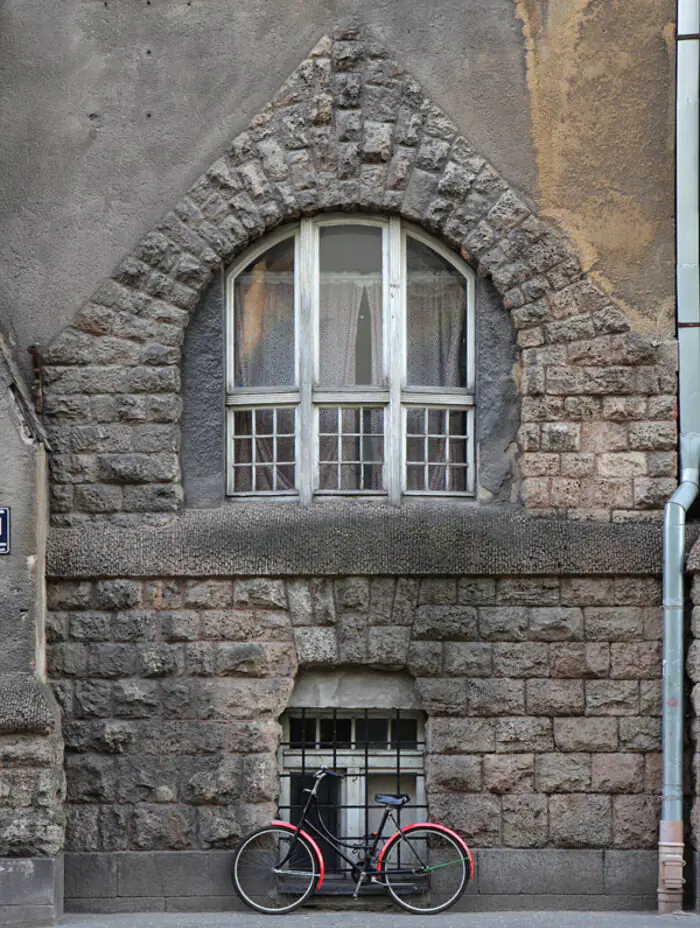
jugendstils.riga.lv
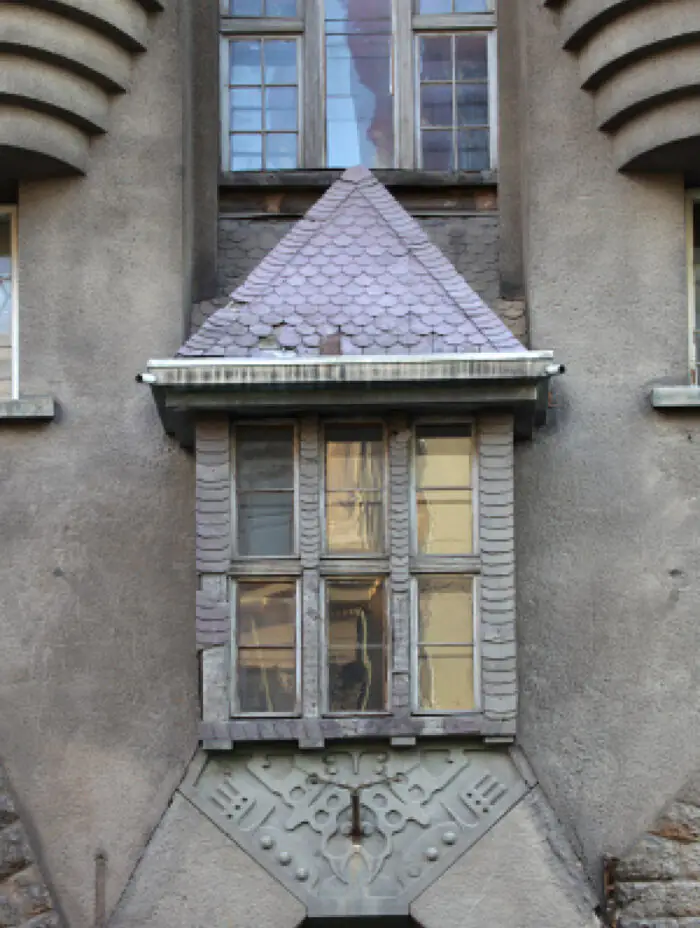
jugendstils.riga.lv
A residential building with a mascaron
Address: Jauniela iela 25/29
Architect: Wilhelm Ludwig Bockslaff
This dwelling house was built for the builder Ludvig Neiburg in 1903. The building replaced several buildings in the street, so it seems so large. To blend in better with the landscape of the old town, the architect divided it into slightly different parts.
The facade is decorated with balconies and bay windows, floral ornaments, mascarons, and the monumental mascaron, which adorns the entrance to the building. Today the building houses a hotel named after the former owner—the Neiburgs.
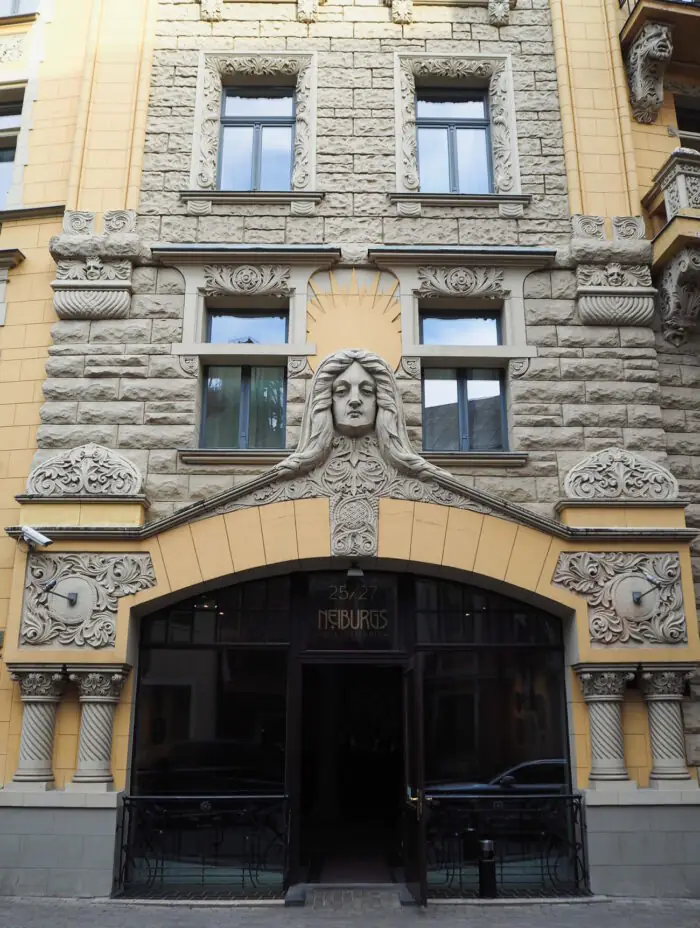
facebook.com/realtorpro.lv
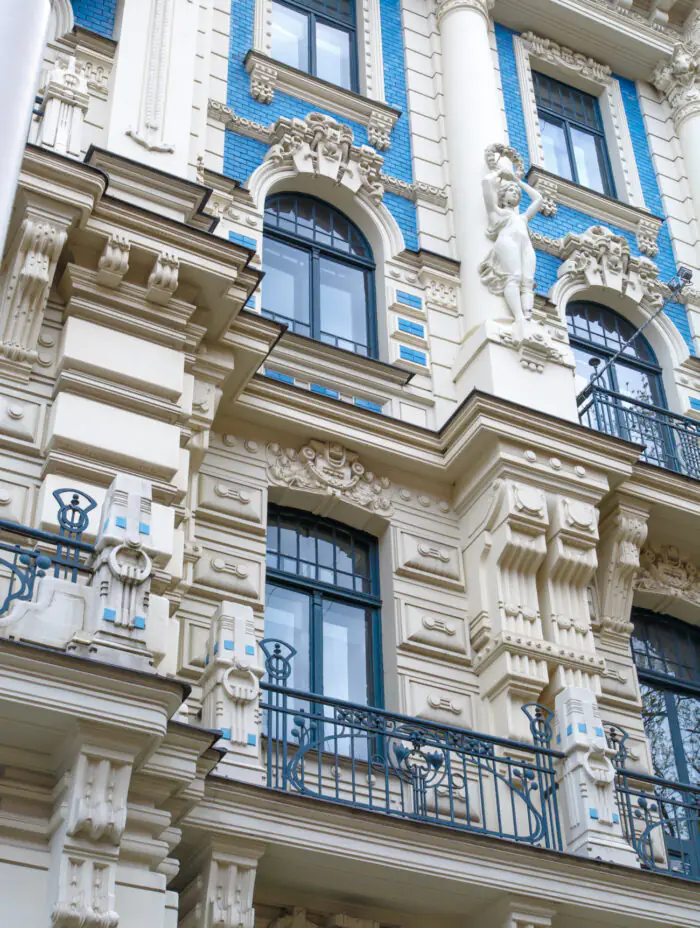
stock.adobe.com
Stockholm School of Economics
Address: Strēlnieku iela 4a
Architect: Mikhail Eisenstein
This bright building, reminiscent of a birthday cake in decoration, was built in 1905 and originally housed a private school. In Soviet times it was a dormitory and in 1993–1994, the facade of the building was restored and it now houses the Stockholm School of Economics.
Look closely at the abundantly decorated facade of the house, and you will see plenty of columns, mascarons, ornaments, and symbolic details. This building can be called the most extravagant in Riga.
The grey building on Blaumaņa Street
Address: Blaumaņa iela 28
The building at the intersection of Krišjāņa Barona, Blaumaņa and Perses Streets is the only Art Nouveau building by the Eclecticist architect Karl Johan Felsko. At first, one might not see the Art Nouveau details in the building, but the tall and seemingly austere house also belongs to this trend.
Look closely at the mascarons, lion heads, medallions, and decorative roof parapets, and you’ll see that it’s Art Nouveau, albeit in a slightly more modest version than, say, Eisenstein’s work.
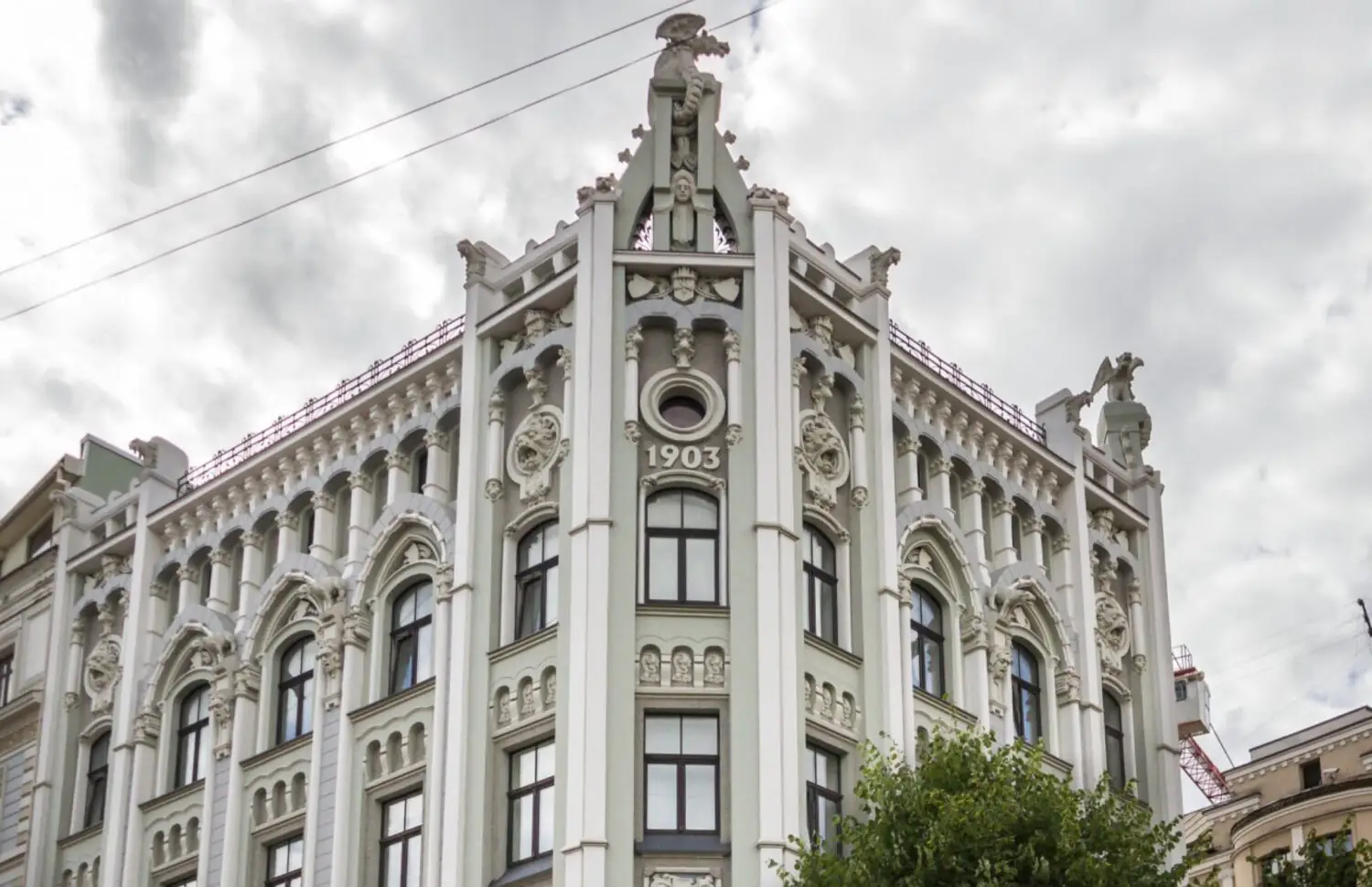
latio.lv
Residential building on Vilandes iela
Address: Vīlandes iela 10
This building on Vilandes iela was designed by one of the three leading architects of Art Nouveau in Riga, Konstantin Pēkšēns. Its facade is created in National Romanticism, a substyle of Art Nouveau.
Note the rustic decorative elements, the contour and the window with a classic motive: dancing girls, a shepherd and a satyr. And above them, you’ll see vine leaves. The entrance to the building deserves special attention: it is shaped like a keyhole.
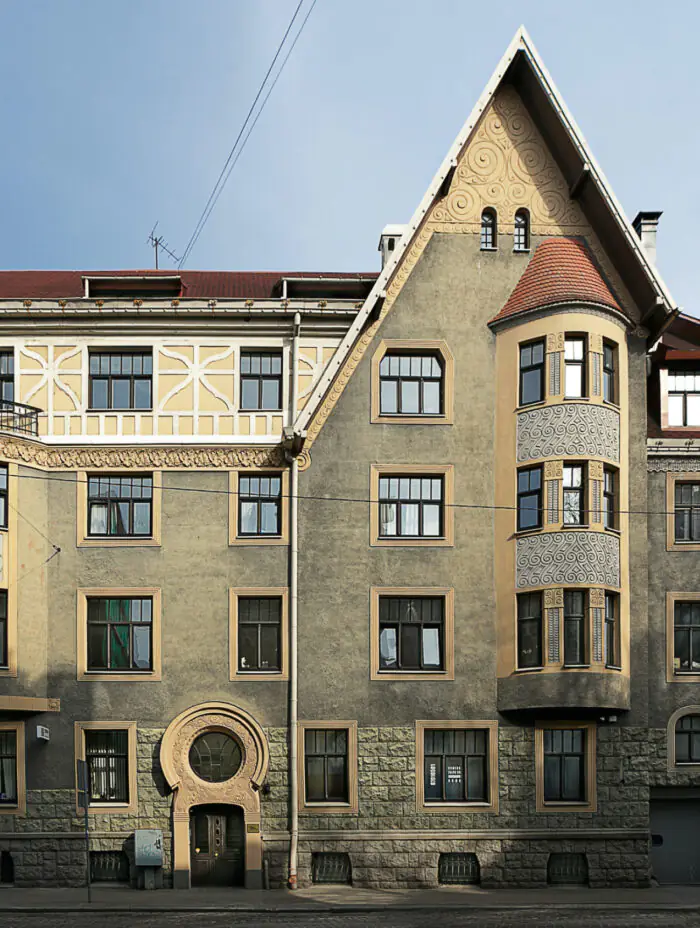
facebook.com/hashtag
Read our other articles where we tell in more detail about the most notable buildings of Riga and Soviet architectural heritage.


